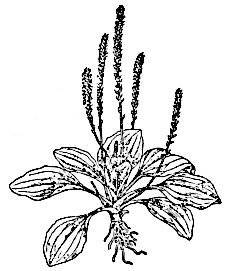[1] British Herbal Pharmacopoeia 1983 Published by the British Herbal Medicine
Association ISBN 0 903032 07 4.
[2] Herbal Materia Medica Course Notes For Diploma of Naturopathy and Diploma
of Herbalism Students by Lydia Mottram.
[3] Potter's New Cyclopaedia of Botanical Drugs and Preparations R.C.
Wren Revised by Elizabeth M. Williamson and Fred J Evans. First published
in Great Britain in 1988 and reprinted in 1989 and 1994 by the C. W. Daniel
Company Limited. 1 Church Path, Saffron Walden Essex. Published 1988 Printed
and bound by Biddles, Guildford ISBN 085207 1973.
Images 1.
wnmu.edu
Inner Path can not take any responsibility for any adverse effects from
the use of plants. Always seek advice from a professional before using a plant
medicinally. Plantago
major. Greater
plantain, Broad-leafed plantain,
Common plantain Family: Plantaginaceae
Plantago
major. Greater
plantain, Broad-leafed plantain,
Common plantain Family: Plantaginaceae
 ORIGIN: Most of world. Britain.
ORIGIN: Most of world. Britain.